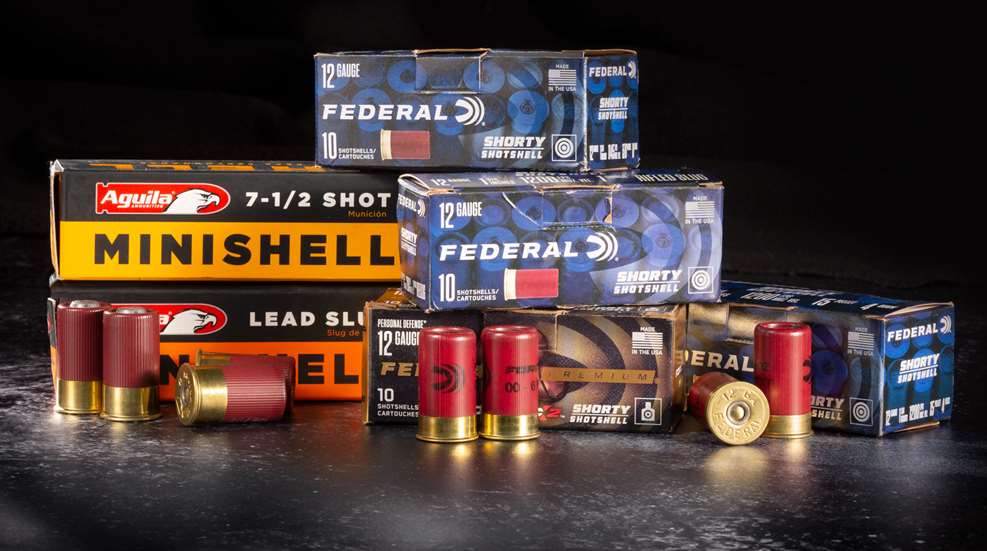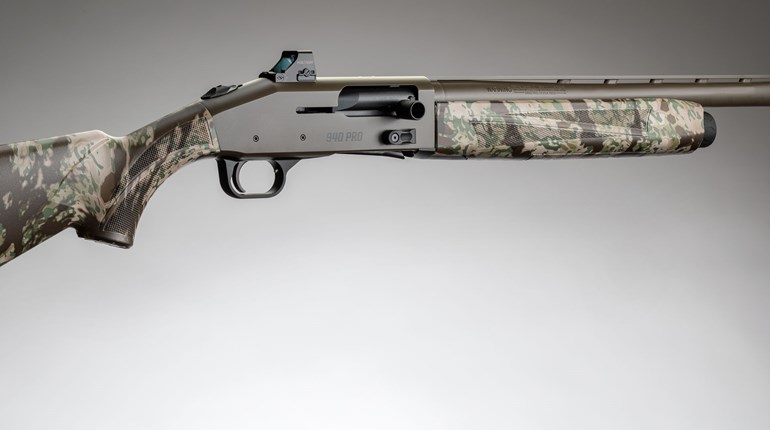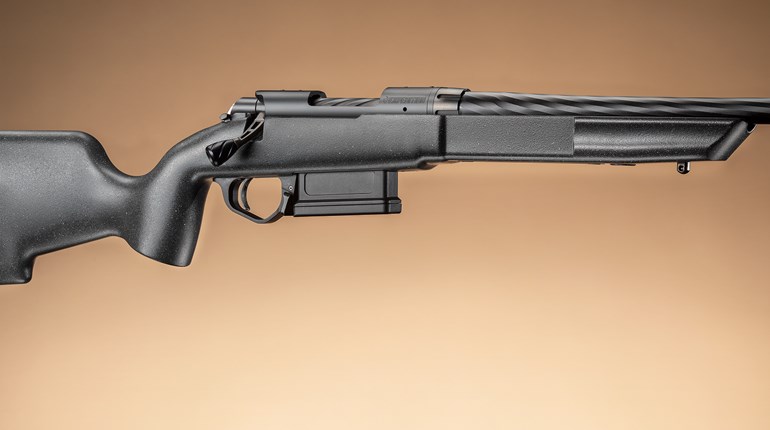
When someone asks a store clerk for 9 mm ammunition, generally the clerk can zero in on the customer’s needs by asking a couple questions: Target or defense? OK then, 124- or 147-grain projectiles? And, away the happy customer goes with a box of cartridges.
Not so fast with shotguns. It takes closer to 20 questions than two. And one of those questions deals with recoil. Does the shooter desire a light-recoiling load? If the answer is yes, one modern option is a 1.75-inch long “minishell.” What’s a minishell? Here goes.
The standard 12-gauge 00-buckshot load for defense is a 2 3/4-inch, nine-pellet load (1.21-ounce payload) that’s fired at approximately 1,200 fps to produce 1,690 ft.-lbs. of muzzle energy and 30 ft.-lbs. of free-recoil energy. When you consider that a .243 Win. rifle produces about a third of the recoil energy, it’s easy to see why even an average buckshot load is not all that fun to shoot, even for seasoned shooters. For novices, the load can be downright painful. Painful shooting experiences are not conducive to regular practice, and regular practice is the key to shotgun proficiency, especially when under the extreme pressure of a home invasion.
There are three simple ways to reduce shotgun recoil, and all have their downsides: 1) Reduce the weight of the payload. This decreases recoil, but also decreases the load’s total energy. 2) Increase the weight of the gun. This makes the shotgun more difficult to carry and move around. And 3) Reduce the velocity of the payload. This also reduces the payload’s total energy as well as the energy of the individual pellet once it spreads away from the others.
Currently, three companies produce a 1.75-inch minishell: Aguila, Federal and Challenger. Although each is slightly different, the concept is the same: They use a shortened shell that has roughly half the payload capacity of a 2 3/4-inch shell to reduce recoil. (It should be stated that these shells are 100-percent reliable only in break-open-style guns, and do not work well in most pumps and semi-automatics without modification, with the exception of one space-age bullpup semi-auto called the SRM 1228.)
Although the Mexican company Aguila wasn’t the first to commercialize shorter-than-standard shells (Europeans have used 2.5-inch shells for years) it may be the best known because its major commercial launch in the U.S. was quickly followed by Mossberg’s launch of its popular Shockwave pistol-grip firearm. In addition to making this small gun’s recoil manageable, use of the miniature shells increased its capacity from five to eight rounds. (An inexpensive aftermarket receiver buffer, called the OPSol Mini-Clip, must be installed to make the Shockwave reliably feed these shells.)
Aguila offers its Minishell in No. 1 buck, No. 4 buck, No. 7.5 birdshot and finally, a slug load. Both its 5/8-ounce (seven-pellet) No. 4 buck and (four-pellet) No. 1 buck loads produce around 10 ft.-lbs. of felt recoil (in a 7-pound gun) while producing 950 ft.-lbs. of muzzle energy. The Minishell slug (7/8-ounce, 385 grains) is fired at 1,300 fps for 1,400 ft.-lbs. of energy downrange and 14 ft.-lbs. of free-recoil energy at the shoulder.
In my experience, all are fun to shoot thanks to low recoil, and the birdshot and buckshot patterns open up extremely fast, which is great for ranges shorter than 10 yards and not so good for longer ranges. However, the buckshot patterns, in particular, tend not to be very uniform, and the slug load, while impressive in the energy department, is anything but accurate. Still, for recoil-sensitive people, practice, and holding a bunch of rounds in your shotgun’s tube, the Minishell is effective.
Federal, refusing to concede market share, launched a similar product it calls its Shorty Shell, including a six-pellet segmenting 00-buckshot load called Force X2, a No. 8 shot/1,145 fps birdshot load, a 15/16-ounce/1,200 fps No. 4 buck load and a 1 ounce/1,200 fps rifled slug. While recoil is comparable to the Aguila load above, my experience with the Federal slug load suggests it is more accurate. I don’t know how Federal fit six pellets into such a small shell, and considering such, it would be my choice if I were to choose a Shorty shell for defense.
Finally, a company called Challenger produces a 1.75-inch shell it calls its Shortshell. It’s available in No. 7.5, buckshot and a slug, all leaving the muzzle at 1,200 fps.
So, are minishells worth trying? I think the minishell concept is valid. In essence, it offers a way to load more rounds into a shotgun while reducing its recoil. Problem is, guns and loads for defending your home should be more than concepts; they should be proven winners. And at this time there are only a couple of repeating shotguns that can reliably feed the minishells. This alone eliminates them from most “what’s best for home-defense” debates.
And then there is the question of terminal energy; sure, minishells mitigate recoil, but they do so at the cost of terminal energy. Being a lifelong hunter, I know that energy is not just a talking point made by ammunition marketers after they run some ballistic calculations. Rather, energy—or the product of a projectile’s mass and velocity—works to penetrate tissue, destroy bones, wreck vital organs and cause massive hemorrhaging and shock, which often lead to a quick neutralization of threats. Plainly speaking, energy is the destructive force that makes projectiles deadly. Use of a minishell in a shotgun cuts the shotgun’s downrange energy in half.
But, I do like these cute, tater tot-looking shells for practice. After all, who among us likes being beaten up if they don’t have to be?






































